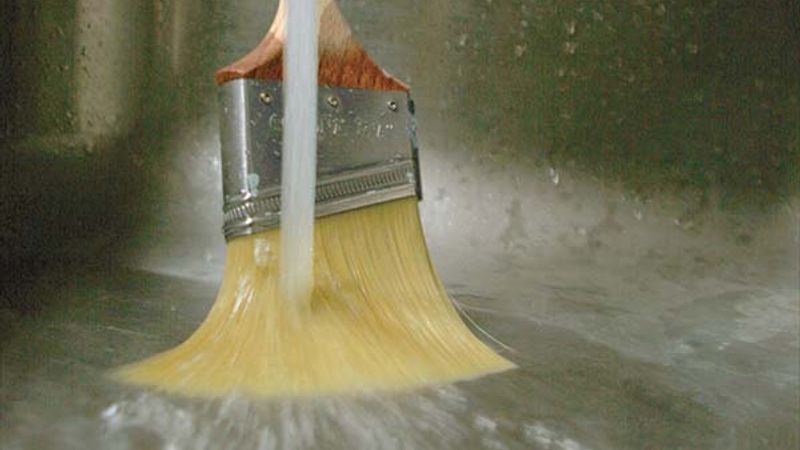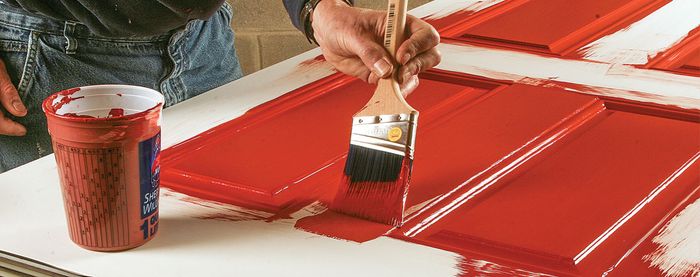How to Clean a Paint Brush
Follow these steps carefully to remove latex paint from a brush.

If you invest in a high-quality paint brush, it’s essential to know how to give it a proper cleaning to maintain the brush for optimal performance. To remove latex paint from a brush, start by rinsing out the brush under warm water, flaring out the bristles on the bottom on the sink to extract the paint. Once most of the paint has been washed away, comb out the bristles with a steel brush, moving from the ferrule towards the tip of the bristles to loosen any paint that’s hardened on the brush. After combing, rinse the brush again and repeat this process until the water runs out of the brush clear. Once clean, get rid of the excess water by tapping the brush on the toe of your shoe. Then give it a final brushing with the comb to restore its shape. Return the brush to its wrapper or case to protect it until its next use.
More Painting Tips


View Comments
Is it wrong if I use turpentine? It cleans it perfectly every time.
I would add a giant asterisk that says "only do this if you're on a public sewer system, not septic".
Depending on weather, paint brushes should only be used for about an hour before cleaning.
Using a spinner gets more water out and the bristles dry nice and flexible.
Only read the text. Did not watch the video as Adobe Flash Player messes up google chrome so I disabled it. The following is from an old time commercial painter that I met at a job years ago: First always paint from a pail rather than the can. Pour a few inches of paint into the pail and close the can. When finished pour remaining paint back into can and close can. Rub excess paint from pail and brush with newspapers or rags. With an inch or so of whatever is solvent for the paint(water or thinner)begin to clean the pail with the brush. Clean all over including any spills on the outside. Hold the brush head down in the pail with the handle between your palms and rub your hands back and forth to spin the brush and force the cleaner out of the bristles. Repeat with new solvent until the last cleaning leaves the solvent clear(or nearly so). Along the way use a wire brush on the bristles if necessary. Leaves you with a clean brush and a clean pail. Dry brush with newspaper or rags. If using thinner, it takes about a gallon of thinner to clean a brush. To conserve thinner, discard the first cleaning thinner then save second cleaning in marked can for the first cleaning next time and save the third for the second in another marked can etc. I have brushes that are decades old using this method.
Rather than a wire brush, even a brass one, use a hard bristle scrub brush. It's less damaging to the individual bristles.
While we've all tapped a brush against our toes to knock out most the water, this is very hard on the ferrule holding the bristles. Over time, it will loosen the nails securing the ferrule.
To make the brush easier to clean, wet it with the solvent you'd use to thin or clean the paint. If the bristles are wet before the brush is dipped, they'll soak up less paint.
I have a couple rules for using my brushes: If I'm stopping for up to twenty minutes, I wrap the brush well in a grocery bag. Anything more than that and I wash it and store it in the original [or replacement] sleeve.
ALWAYS keep and use the sleeves your brush came in. They shape the brush, as it dries.